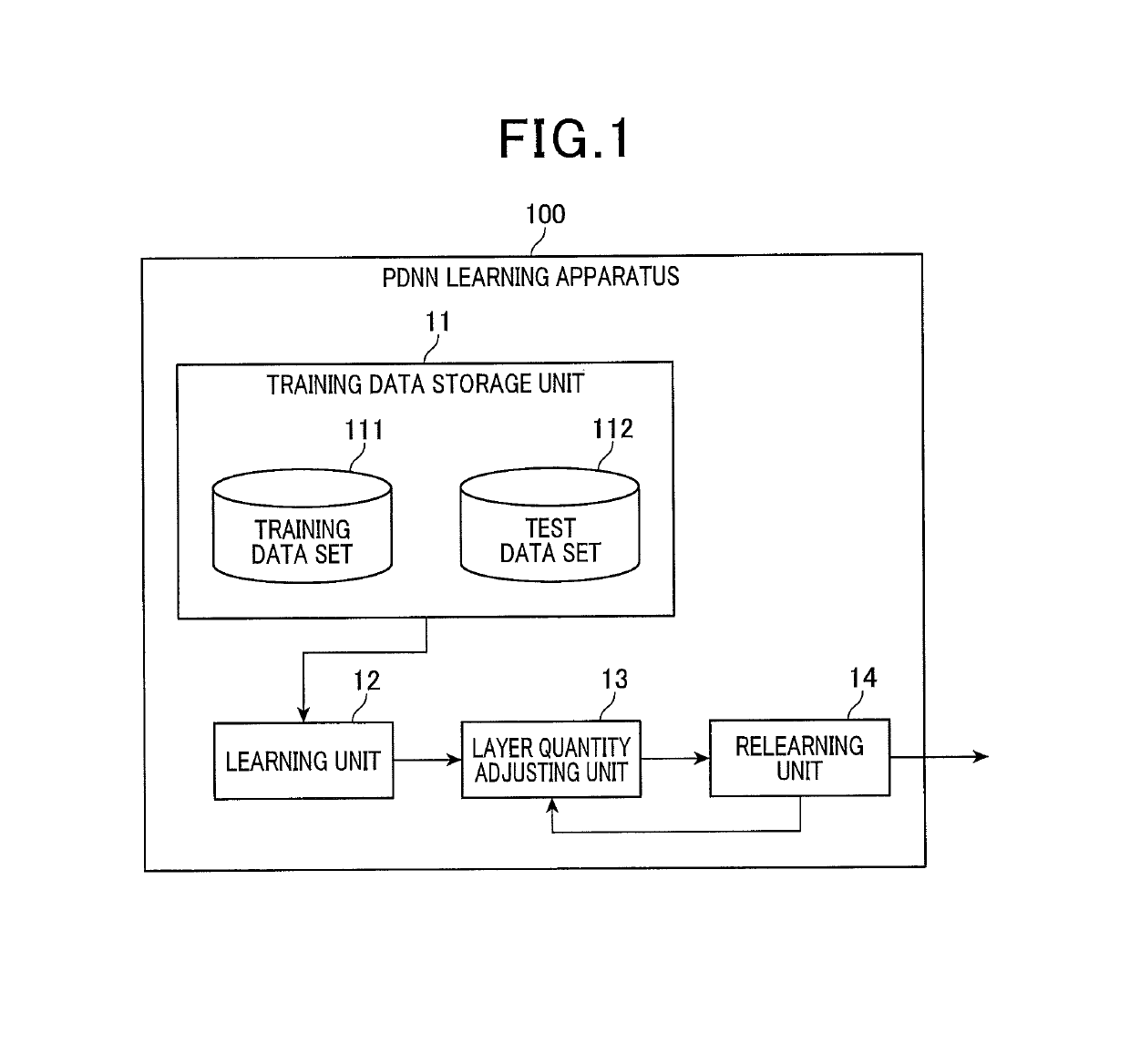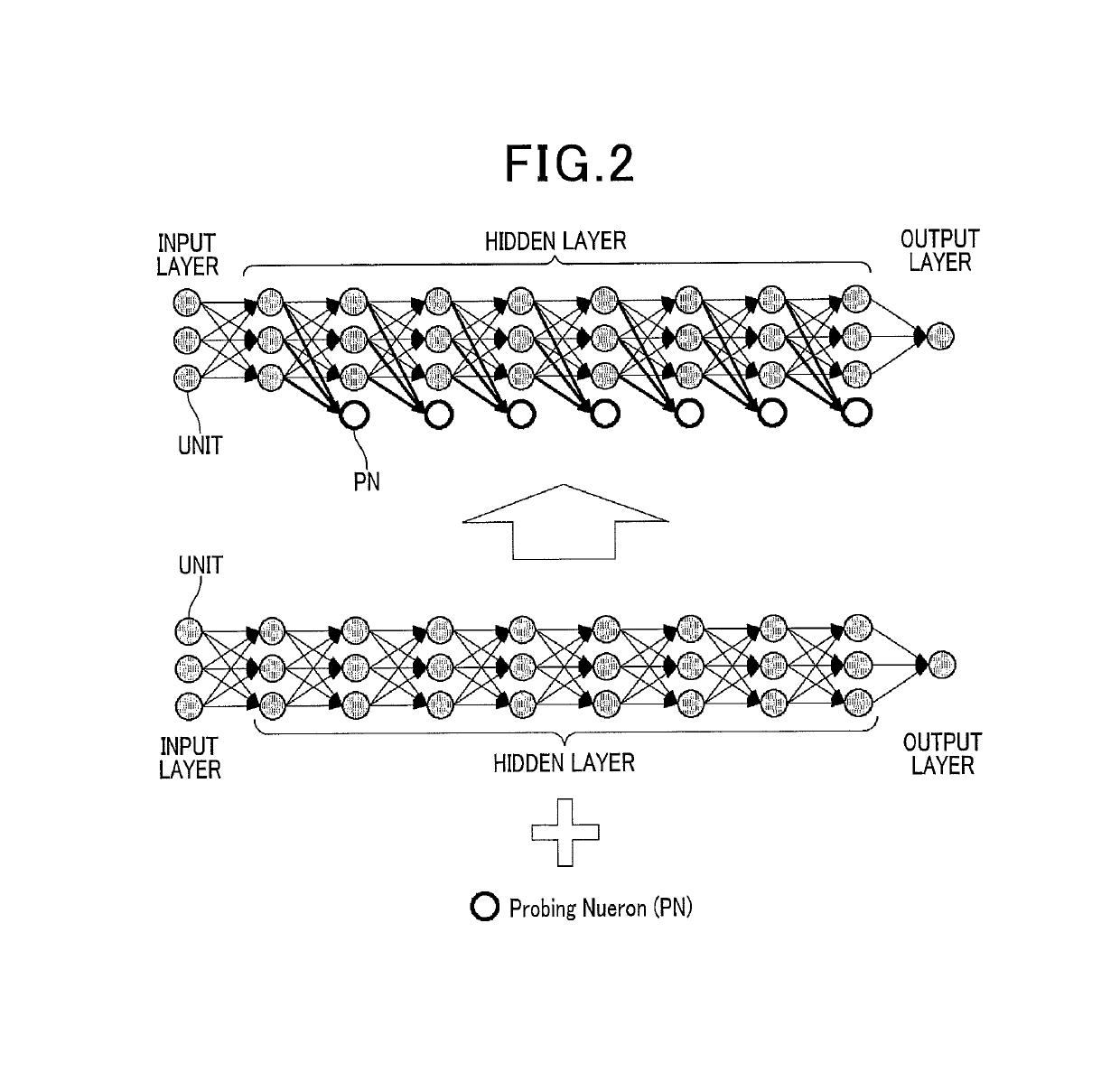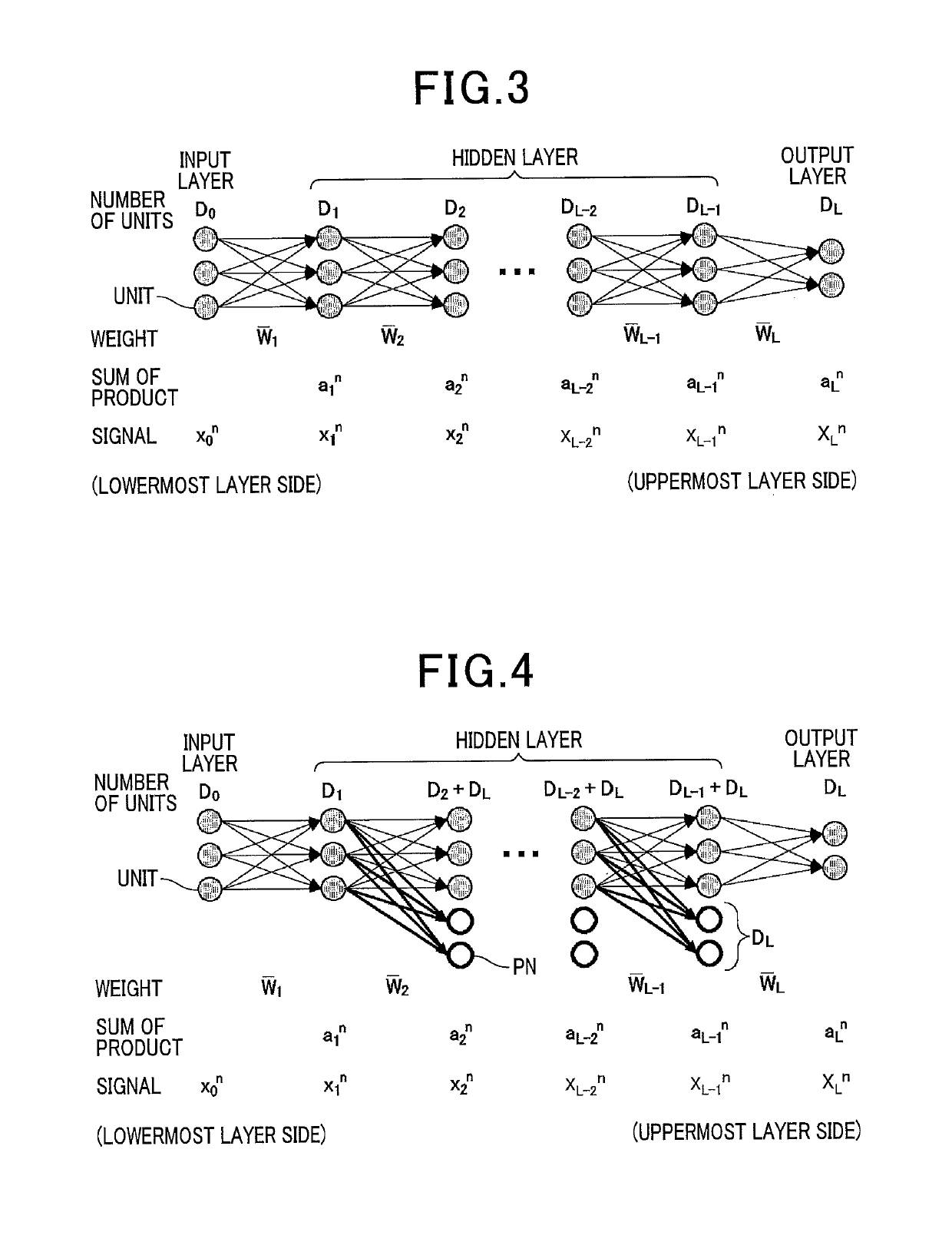Learning apparatus, learning program, and learning method
a learning apparatus and learning method technology, applied in neural learning methods, biological neural network models, neural architectures, etc., can solve the problems of inability to optimally decide the number of layers, the number of layers per se is not optimized, and the method for optimally deciding the number of layers has not been proposed. , to achieve the effect of sufficient generalization capability and reducing the amount of processing load and computation time required
- Summary
- Abstract
- Description
- Claims
- Application Information
AI Technical Summary
Benefits of technology
Problems solved by technology
Method used
Image
Examples
first application example
[0132]FIG. 11 is a block diagram of a configuration of a multilayer neural network in a first application example. As shown in FIG. 11, a multilayer neural network learning apparatus 200 includes the PDNN learning apparatus 100 according to the present embodiment and a learning unit 101 of an ordinary multilayer neural network that does not have PN. The learning unit 102 performs a learning process of the multilayer neural network by a learning method similar to the conventional method. The PDNN learning apparatus 100 provides the learning unit 101 with the result of the learning process (the values of the weights remaining after removal) of the PDNN as the initial values.
[0133]In the PDNN, the linear separation capability of each hidden layer is optimized. Therefore, the PDNN has an advantage in that a nonlinear internal representation is not excessively generated. On the other hand, the role of each unit significantly differs in a network that has PN, compared to a network that do...
second application example
[0135]In the present application example, a discriminator that uses the PDNN that is learned (trained) according to the above-described embodiment or the variation examples thereof will be described. High-speed discrimination using early rejection becomes possible by an appropriately trained PDNN. The discriminator in the present application example performs early rejection using the PDNN. In the present application example, the concept of early rejection will be described using pedestrian detection as an example.
[0136]FIG. 13 is a diagram of an example in which a pedestrian is detected using an on-board camera. As shown in FIG. 13, the discriminator performs exhaustive discrimination of an area (determines whether or not a target is present) by scanning a window 131 of the discriminator over an image 130. As in the example in FIG. 13, when the majority of the area within the window 131 is a background, discrimination of the overall image 130 is performed at an extremely high speed ...
third application example
[0139]The third application example is a variation example of the second application example. In the present application example, the unit in the output layer and the PN of each layer are made to approximate different types of target values. Early rejection is thereby performed. FIG. 15 is a diagram of an early rejection process in the present application example. Hereafter, as an example, the application of the PDNN in FIG. 15 to an issue regarding sign recognition from an image captured by an on-board camera is considered.
[0140]The PN is trained to perform a binary classification. The binary classification involves whether or not a sign is present in an image patch. The sign may be any type of sign. Meanwhile, at the output layer, units that have each been trained to recognize unique signs are disposed. For example, a unit that performs binary classification regarding whether or not a stop sign is present, and a unit that performs binary classification regarding whether or not a n...
PUM
 Login to View More
Login to View More Abstract
Description
Claims
Application Information
 Login to View More
Login to View More - R&D
- Intellectual Property
- Life Sciences
- Materials
- Tech Scout
- Unparalleled Data Quality
- Higher Quality Content
- 60% Fewer Hallucinations
Browse by: Latest US Patents, China's latest patents, Technical Efficacy Thesaurus, Application Domain, Technology Topic, Popular Technical Reports.
© 2025 PatSnap. All rights reserved.Legal|Privacy policy|Modern Slavery Act Transparency Statement|Sitemap|About US| Contact US: help@patsnap.com



